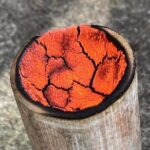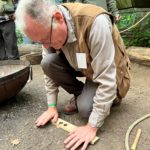The Batwa people live around Bwindi Mgahinga National Park in Uganda. This park is significant because it houses half the world’s mountain gorilla population. The Batwa were the last tribe permitted to hunt in this national park before they were forced to leave between 1991 and 1994. The forest was recognized as a UNESCO World Heritage Site during this time.
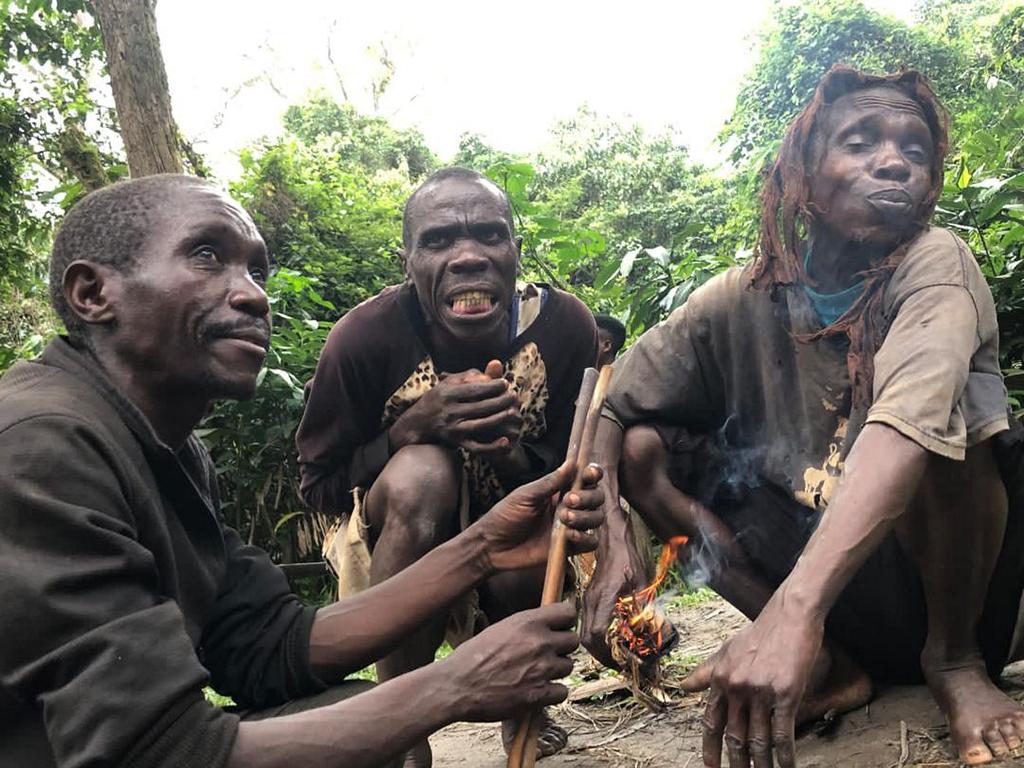
With a population of less than 7,000, the Batwa are known for their strength and short stature. They are one of the few remaining tribes in Uganda that has maintained its traditions and history.
Traditional Fire Lighting Method of the Batwa Pygmies
The Batwa pygmies have been using the hand drill friction fire method to make fire, and they continue to do so as of November 2023. This technique was widely employed in the past across Eastern and Southern Africa. However, in today’s world, most people in this region use disposable Butane gas lighters to start fires. It is crucial to preserve the knowledge of the traditional fire lighting method still practiced by the Batwa pygmies and to compare it with the techniques of other ancient tribes, such as the bushmen in Southern Africa.
Shape and size of fire sticks
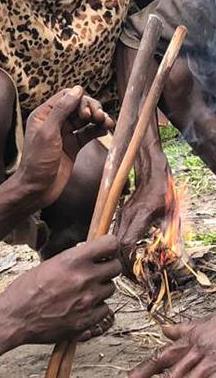
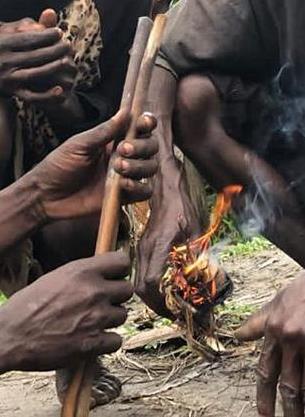

The fire sticks’ spindle and hearth are approximately 40 cm (abt. 16 inches) long. The spindle is as thick as a human’s middle finger, while the hearth is comparable to a human’s thumb in thickness. Both sticks are ideally obtained from the same shrub, ensuring they have the same wood hardness.
To meet the requirements for hand drilling, both sticks must be straight, dry, free of wormholes, and have the bark removed. The necessary wood hardness is determined by pressing a fingernail into the area to be used, forming a groove approximately 1 mm (abt. 1/32 inches) deep.
These size and wood specifications apply to the Batwa Pygmy and Khoi-san Bushmen hand drill fire lighting methods.
Material used for fire sticks
The fire sticks used by the Batwa pygmies, both the hearth and spindle, are crafted from the same type of wood. This wood is typically Triumfetta rhomboidea or a related species known by various English common names such as Burbark, Burweed, Hibiscus burr, and many others. The Batwa pygmies refer to it as ‘Obusingo.’ You can find a selection of its common names worldwide through this link.

Triumfetta is the second-largest genus in the Grewioideae subfamily within the Malvaceae family. It includes around 150 species that are spread across tropical regions in America, Africa, Asia, and Australia. Burbark is a highly prevalent weed found worldwide and is particularly widespread in tropical areas.
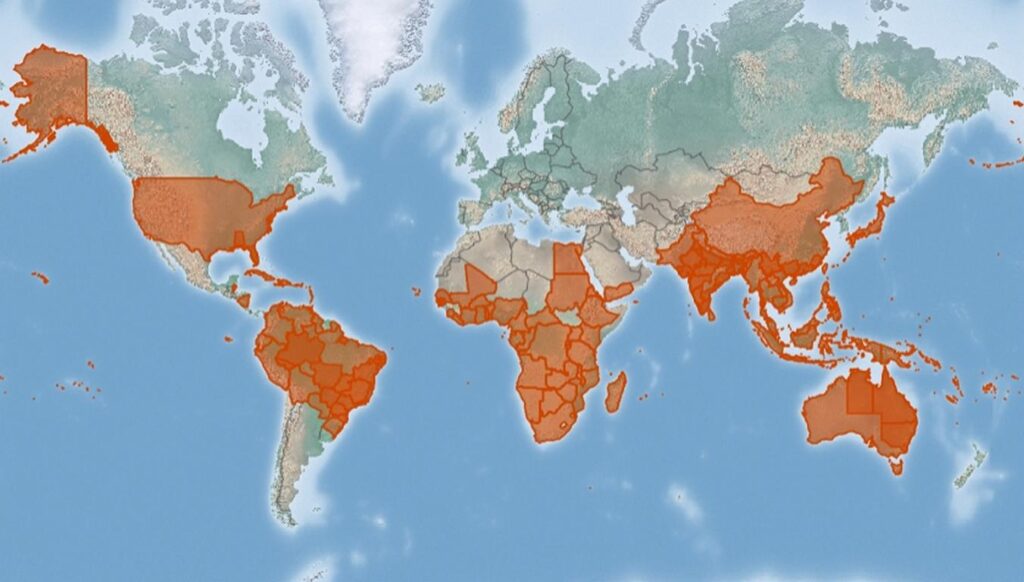
Distribution of Triumfetta rhomboidea; Map by CABI Digital Library at this link.
In Southern Africa, the raisin bush (Grewia bicolor) is significant for friction fire lighting. Notably, all Grewia species, including the raisin bush, belong to the same botanical sub-family as the Triumfetta species. This close botanical relationship suggests a shared tradition between the Batwa pygmies and Khoi-san Bushmen. This connection is further evidenced by the similarities in the shape and material of their firesticks.
Preferred tinder
Tinder plays a crucial role in igniting an ember generated by drilling it into a flame. The environment is often very humid in African evergreen forests, specifically in Tropical Rainforest or Semi-deciduous Tropical Forest biomes. Consequently, dead wood tends to rot quickly and may not be readily available in a dry state for use as tinder. In earlier times, the Batwa pygmies relied on the inner bark of certain trees and the shavings of wood borer larvae found within tree trunks for tinder.



Notably, the inner bark of Ficus trees possesses desirable qualities for tinder. It is stringy, durable, and quickly dried. The Batwa pygmies, who use Ficus tree inner bark for crafting their bark cloth, which they wrap around their heads, also traditionally utilized this inner bark as tinder.
In contemporary times, Batwa pygmies have gained access to agricultural areas, enabling them to conveniently use bundles of millet straw or straw from other grains as tinder. This represents a shift from traditional methods, demonstrating adaptability to changing environments and resources.
Hand drilling set-up
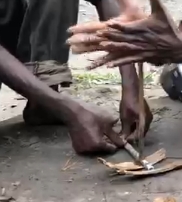
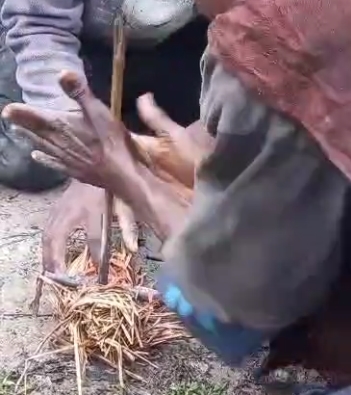
Before beginning the hand drilling process, the Batwa pygmies flatten the upper side of the hearth stick and create a depression for securely holding the spindle. The hearth stick is then either placed directly on a tinder nest or used in a fixed ember receptacle. This receptacle can be a wood shaving, a knife, an ax head, or similar items, as illustrated in the picture above.
Hand drilling procedure
In their unique hand drilling procedure, Batwa pygmies engage two people, but only one rotates the spindle. The second person holds the hearth stick in position, taking over the drilling only when the first person becomes fatigued.
Interestingly, most other ethnic tribes globally employ different methods. They typically use either one foot, both feet or a knee to secure the hearth stick in place. When two people are involved, both individuals rotate the spindle during one stroke each. The process involves person A rotating the spindle and pressing it downwards. Once at the lowest point, person A holds the spindle in the groove, and person B takes over by rotating the spindle from the top. This rotation and exchange continue until a usable ember is formed.
It is also interesting to observe that Batwa pygmies encourage some naturalistic spirits to help create fire by constantly shouting a particular phrase. Khoi-sani bushmen use a very similar encouragement. This chanting of bushmen can be heard in the video on another article on the Bushguide101 website.
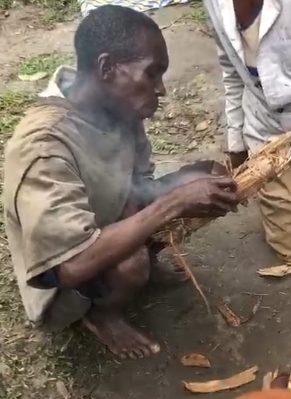


Once the ember is successfully formed through hand drilling, it is transferred into the tinder bundle. This bundle is then carefully blown upon to bring the ember to life. This is a common technique used in all hand drilling operations. This process is crucial for transforming the ember into a flame, enabling the ignition of the fire.
Key Insights from the Batwa Pygmies Fire Lighting Method:
- Similarity in Fire Stick Shape:
- Both the Khoi-san bushmen and pygmies exhibit a close resemblance in the shape of their firesticks.
- Shared Taxonomic Sub-family:
- Both ethnic groups utilize wood for their firesticks from plants belonging to the same taxonomic subfamily.
- Historical Tinder Usage:
- In the past, Batwa pygmies primarily used the inner bark of fig trees as tinder for their fire lighting.
- Contemporary Tinder Choice:
- In modern times, Batwa pygmies have shifted to using straw to create tinder bundles.
Further readings about Fire-making on this website:
Creating fire with a magnifying glass
Hadza hand drill friction fire
Bow Drilling – following the method of Mattias Norberg
Giant Fennel stalks for lighting fire
Manketti wood for friction fire lighting
Bushscout UK’s fire bundle basket
Fire lighting with Flint & Steel
Hand drilling in UK as taught by Dave Watson
Bow drill standard procedure by Dave Watson
Bow drilling in Australia by Gordon Dedman
Hand drill friction fire lighting in Australia
Creating fire by hand drill in Namibia
Australian friction fire wood species
.


